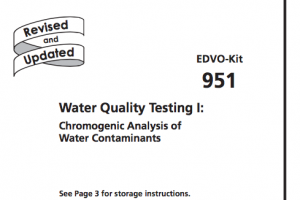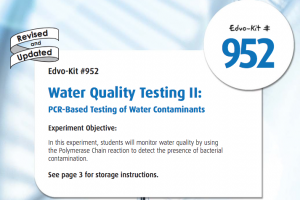Introduction A human crisis of unprecedented proportions is in the making. Diminishing arable land, water shortage, and expected population growth to 10 billion portend a catastrophic food security crisis by 2030. This threat requires a dramatic reduction of the environmental footprint of agricultural practices. A paradigm shift to the food supply chain is necessary to […]
The objective of this experiment is to use chromogenic reagents to test simulations of water samples contaminated with known bacteria. As an extension, students will apply this test as a field activity to screen local bodies of water for the presence of coliform bacteria.
In this experiment, students will monitor water quality by using the Polymerase Chain reaction to detect the presence of bacterial contamination.
Main theme: Natural selection, artificial selection, genetic modification & cloning all result in same thing – desired or most fit phenotypes, but the processes are different and have different ethical considerations.
Natural selection, artificial selection, genetic modification & cloning all result in same thing –desired or most fit phenotypes, but the processes are different and have different ethical considerations. Predict offspring phenotypes & genotypesDifferentiate between natural selection, artificial selection & genetic modification & cloningAppreciate benefits of genetically modified organisms (GMOs)Clarify concerns about GMOsPrioritize biodiversity Genetics Worksheet & Readings
DNA is underlying information storage and hereditary unit of life on Earth. Conceptualize genetic diversity & its relationship to DNA, RNA & proteinsExamine genetic and species diversityRecognize gene variability through allelesDefine heterozygous, homozygous & epigenetics and their influence on genotype & phenotypePredict inherited genotypes and phenotypes with virus models Epigenetics Listening homework: http://www.radiolab.org/story/251885-you-are-what-your-grandpa-eats/ Virus models […]



